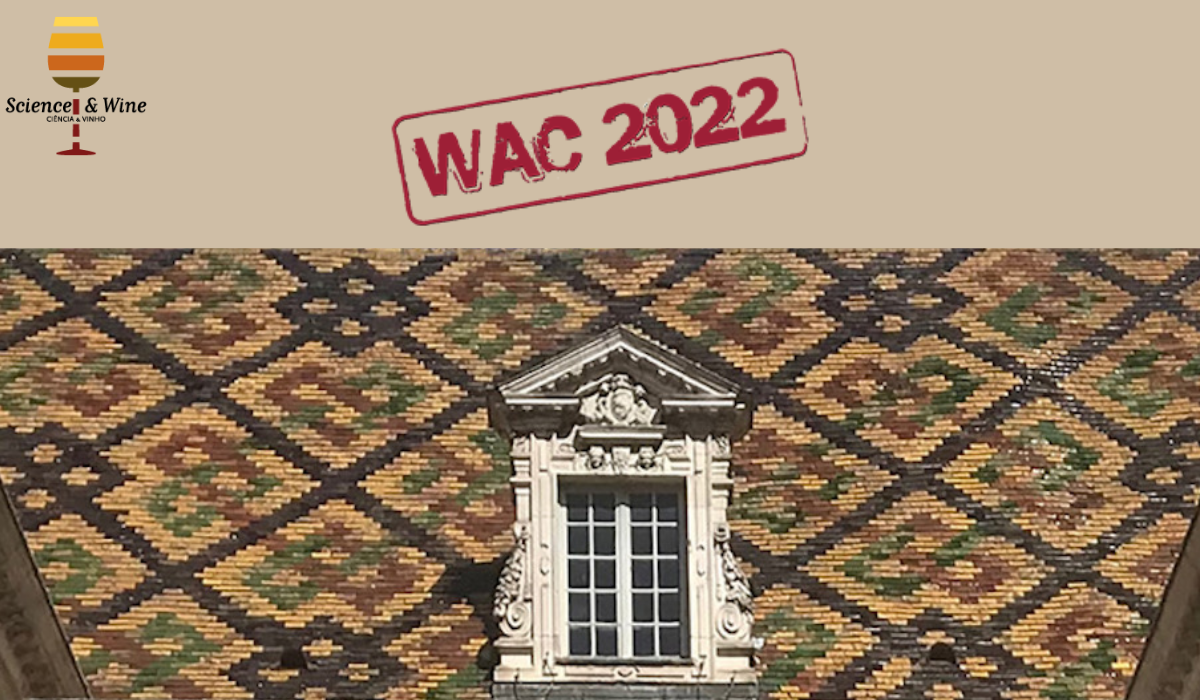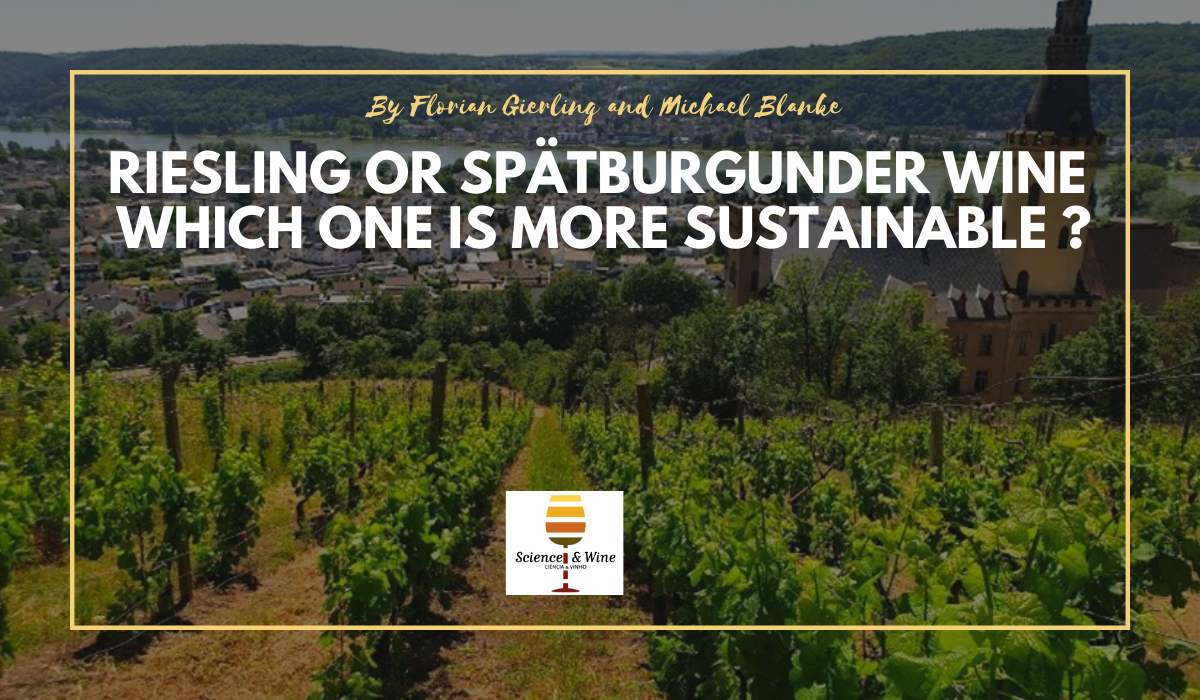There is growing concern about the effects that a climate change may have on grape production and quality. This has led to studies carried out in different wine-growing areas of the world in which a trend of advance of phenology and harvest has been seen. However, the degree of change may not be the same in all areas and for all varieties. Given the projected climate change scenarios that involve changes in temperatures and in precipitation, it is necessary to deepen the knowledge of the response of different varieties to these changes and identify those varieties that may be more resilient, in addition to adopting other measures that can help mitigate the effects of warming.

3rd World Science & Wine: Sustainability of wine production and food systems in the Mediterranean region
As promised, we will maintain the organization of the World Congress every two years. The 3rd World Science & Wine Congress will be from 14 to 16 June 2023 in Vila Nova De Gaia and the Douro region. The topic for this scientific meeting here will be “Sustainability of wine production and food systems in the Mediterranean region”.

Vineyard management influences grape-borne fungal community and the aroma profile of wines: the case study of Montepulciano d’Abruzzo
This post summarizes the results of a study aimed to investigate the effect of farming practices on the diversity of grape fungal community of Vitis vinifera L. cultivar Montepulciano and the microbial metabolic activity. The obtained results revealed that farming practices shape the fungal community influencing wine traits linking the wine with the viti-vinicultural area of origin.

Heating effect on leaf functioning, water use efficiency and berry composition in two contrasting Vitis vinifera varieties.
Global warming will threaten vineyard sustainability in warm and arid regions. Therefore, increasing water use efficiency (WUE) is essential for long-term viticulture sustainability. Nevertheless, studies concerning the response of stomata and WUE to temperature are scarce. We evaluated the effect of sustained warming on WUE and its components in cultivars with contrasting stomatal behaviour.

5th Edition of the Wine Active Compounds (WAC) Congress, Dijon 2022
After two successive postponements, the fifth edition of Wine Active Compounds (WAC) 2021 happened in the Palace of the Dukes of Burgundy in Dijon, France, from Wednesday June 29 to Friday July 1, 2022, under the auspices of the UNESCO Chair “Culture & Traditions of Wines” and the Institut Jules Guyot at University of Burgund.

Increased temperatures due to climate change alter anthocyanin concentration and composition in berries of Malbec, Merlot, and Pinot Noir in a cultivar-dependent manner
Climate is determinant for grapevine geographical distribution, berry attributes, and wine quality. Due to climate change, a 2-4 °C increase in mean diurnal temperature is predicted by the end of the century for the most important Argentine viticulture region. The authors hypothesize that such temperature increase will affect color intensity and other quality attributes of red grapes and wines. The present study investigated the effect of high temperature (HT) on anthocyanin concentration and composition, pH, and resveratrol and solids content in berries of three major wine-producing varieties during fruit ripening in two seasons.

Explaining the influence of the ecosystem/viticulture in the Chilean Cabernet Sauvignon quality
Cabernet Sauvignon grapes in Chile, mainly grown between the 30° S and 36° S, account for more than 30% of Chilean wine production, and yield wines with different characteristics which influence their quality. The aim of this study was to apply a liquid chromatography—mass spectrometry (LC–MS)-based metabolomic protocol to investigate the quality differentiation in a sample set of monovarietal wines from eight valleys covering 679 km of the north-south extension. The results pointed out that N-containing metabolites (mainly small peptides) are promising biomarkers for quality differentiation. Moreover, the premium wines were characterized by higher amounts of anthocyanins and other glycosylated and acetylated flavonoids, as well as phenolic acids; standard quality wines, on the other hand, presented stilbenoids and sulfonated catabolites of tryptophan and flavanols.

Riesling or Spätburgunder wine – which one is more sustainable ?
The objective of the present study was to identify management strategies and carbon reduction potentials for a sustainable wine production based on the carbon footprint and the water footprint of locally grown grapes and wine locally produced and consumed.

HEKTOR – Heterogeneous autonomous robotic system in viticulture and mariculture
A heterogeneous robotic system that can perform various tasks in the steep vineyards of the Mediterranean region was developed and tested as part of the HEKTOR—Heterogeneous Autonomous Robotic System in Viticulture and Mariculture—project. This article describes the design of hardware and an easy-to-use method for evaluating the energy consumption of the system, as well as, indirectly, its deployment readiness level. The heterogeneous robotic system itself consisted of a flying robot—a light autonomous aerial robot (LAAR)—and a ground robot—an all-terrain mobile manipulator (ATMM), composed of an all-terrain mobile robot (ATMR) platform and a seven-degrees of-freedom (DoF) torque-controlled robotic arm. A formal approach is presented to describe the topology and parameters of selected vineyards It is shown how Google Earth data can be used to make an initial estimation of energy consumption for a selected vineyard. On this basis, estimates of energy consumption were made for the tasks of protective spraying and bud rubbing. The experiments were conducted in two different vineyards, one with a moderate slope and the other with a much steepest slope, to evaluate the proposed estimation method.

The relationship between grape ripening rate and wine quality
Grape ripening accelerates under warmer and drier conditions, resulting in the accumulation of sugars (‘technological’ maturity) being decoupled from phenolic and aromatic composition. This study investigated the effect of different rates of ripening on the composition of Cabernet Sauvignon and Riesling wines. By mapping grape and wine metabolites and exploring their relationship, the outcomes of this study demonstrate the importance of ripening rates in determining wine quality.

